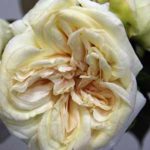
With over 300 species and numerous cultivars Masdevallia Orchids are a large genus of ‘cool climate’ orchids. An excellent orchid for beginners due to the easy care nature.
You can grow them indoors and outside, although they will need to be over wintered indoors in most zones.
An orchid that seems to push forth its delicate but showy flowers (picture right) this is a great orchid for small spaces. They make an excellent choice for indoors, especially if you can give them cool nights.
Originally from the mountains of Mexico and Columbia through to Brazil and Peru, given a little humidity most Masdevallia species can successfully be grown indoors with a little care.

Masdevallia Orchid Care
In terms of care Masdevallia are easy compared to many others. They do not require the heat and humidity of many species, and yet will still reward you with fascinating flowers.
- Light requirements. – Masdevallia Orchids have similar to other Cattleya in light requirements.
- Temperature. – A range of 55 – 70 degrees F from winter to summer. Most Masdevallia species do not like heat and they do like a temperature drop at nighttime of around 15 degrees F. Good ventilation is important and remember to hold back on the water during winter months.
- Humidity – 60 to 80 percent humidity is ideal for most species.
- Fertilization requirements – Use a formulated orchid fertilizer one a month.
- Watering –
- Water often enough to let the potting mix or sub strata dry almost completely between watering. Every week is a guide depending on temperature.
Masdevallia Orchid Varieties

Flower colors range from near white and yellow through to deep reds, many cultivars have interesting markings and hybridisers are producing new flower forms and colors every year. Foliage is a glossy mid green.
Masdevallia Orchid have been highly hybridized and with many colorful named cultivars available as well as the species themselves you can literally find 1000s if different types.
Masdevallia Species
Look for named species such as : M. princeps, M. veitchiana, M. tovarensis, M. coccinea, M. wendlandiana, M. infracta and M. herradurae.

